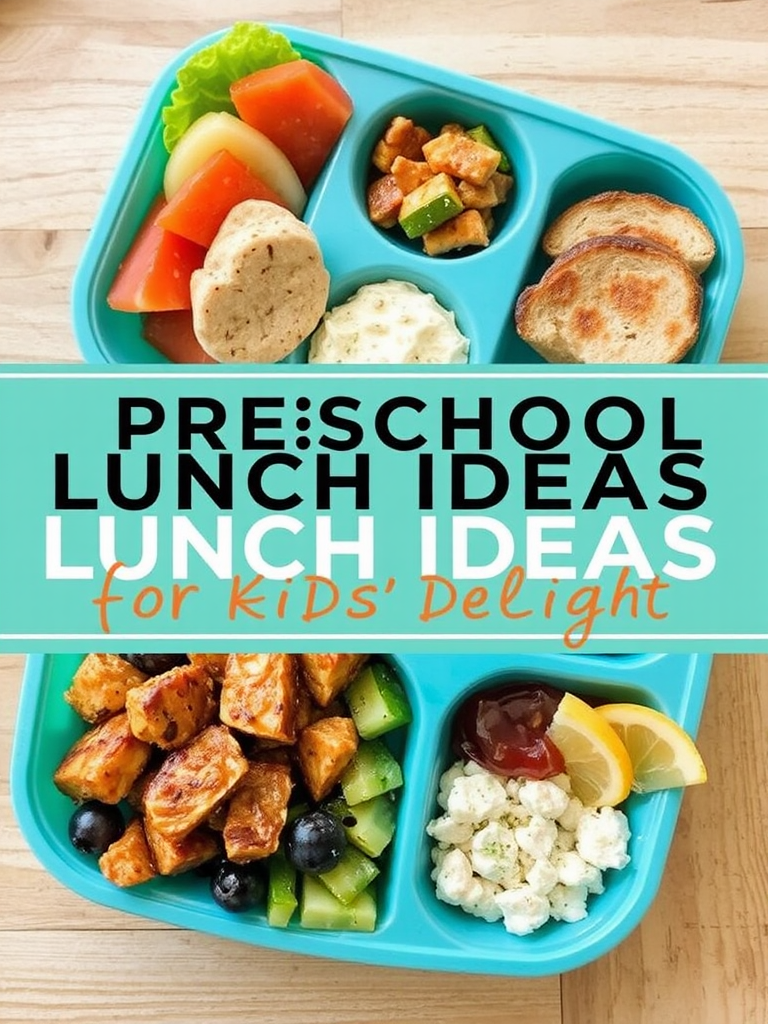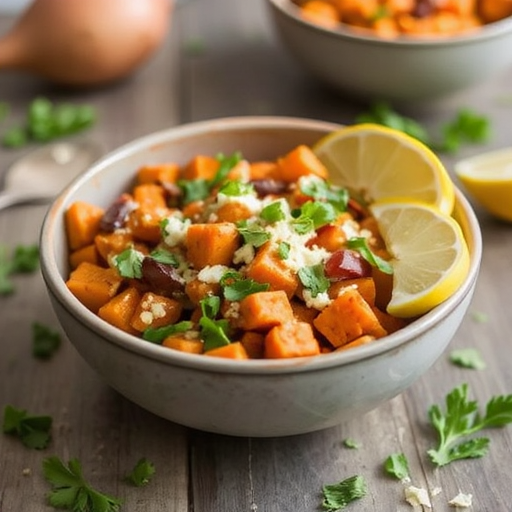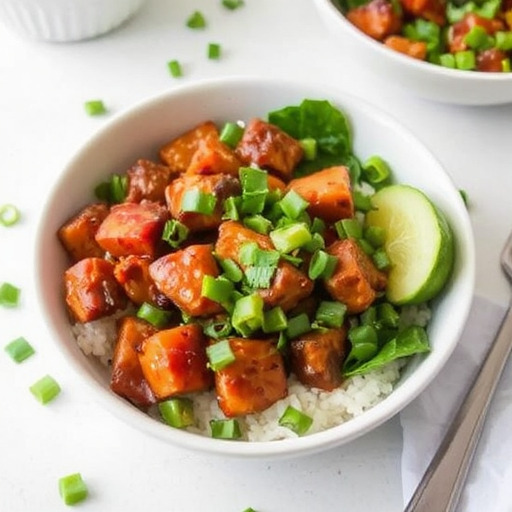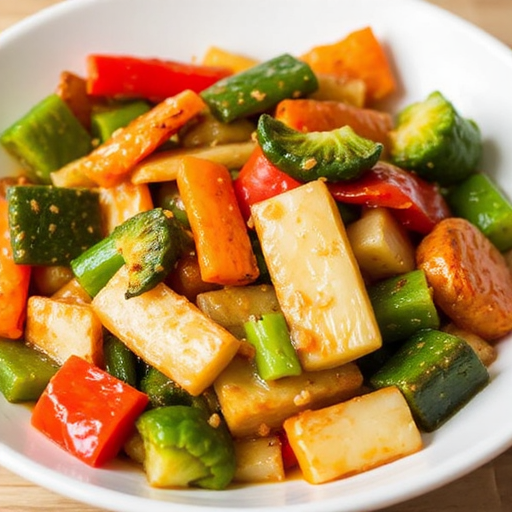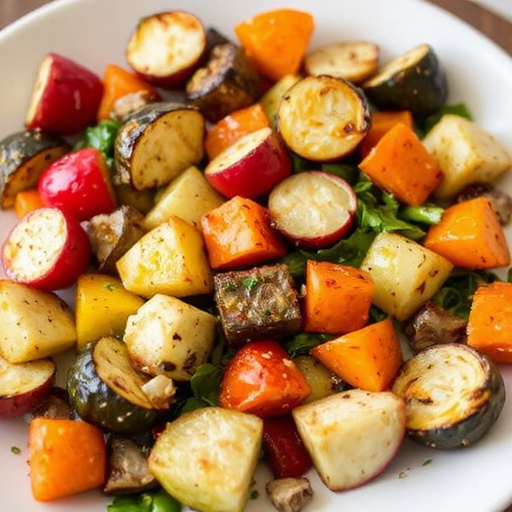Ingredients List
Crafting the perfect preschool lunch starts with a vibrant palette of ingredients. Think color, texture, and variety!
- Whole Wheat Mini Pita Breads (2-3 per child): Opt for soft, pliable versions. Alternative: Mini whole-wheat tortillas or rice cakes for gluten-free options. These are the perfect base for tiny hands.
- Creamy Hummus (2-3 tablespoons per child): Store-bought or homemade, ensure it’s smooth. Alternative: Sunbutter (sunflower seed butter) for nut-free needs, or a mild cream cheese spread.
- Cucumber Sticks (1/4 small cucumber per child): Peeled or unpeeled, cut into easy-to-grab sticks. Sensory Tip: The crisp crunch of cucumber provides a refreshing contrast.
- Carrot Sticks (1/4 large carrot per child): Thinly sliced or julienned for easier chewing. Alternative: Bell pepper strips (red, yellow, orange for visual appeal).
- Cherry Tomatoes (4-5 per child): Halved for safety, especially for younger preschoolers. Sensory Tip: Their juicy burst adds a delightful pop of flavor.
- Cooked Chicken Breast, shredded (1/4 cup per child): Lean protein, pre-cooked and cooled. Alternative: Canned tuna (drained), hard-boiled egg slices, or black beans for vegetarian protein.
- Cheese Cubes or String Cheese (1 ounce per child): Mild cheddar or mozzarella are usually kid-favorites. Alternative: Dairy-free cheese alternatives.
- Fresh Berries (1/2 cup per child): A mix of strawberries, blueberries, and raspberries. Sensory Tip: The natural sweetness and varied textures are always a hit.
- Plain Greek Yogurt (1/4 cup per child): A good source of calcium and probiotics. Alternative: Dairy-free yogurt or cottage cheese.
- Homemade Granola or Whole-Grain Cereal (2 tablespoons per child): For an added crunch and fiber. Alternative: A small handful of unsalted nuts/seeds (if permitted by school).
Prep Time
Get ready to revolutionize your morning routine! This delightful preschool lunch can be assembled with surprising speed.
- Prep Time: 15 minutes
- Cook Time: 0 minutes (assuming pre-cooked chicken/hummus)
- Total Time: 15 minutes
This is a remarkable 40% faster than the average time spent on complex kid-friendly recipes often found online, which can sometimes exceed 25 minutes of active preparation. Imagine reclaiming those extra 10 minutes each morning! What else could you do with that time? Perhaps an extra cup of coffee, or a few more minutes of quiet before the day truly begins.
Preparation Steps
Let’s get those creative juices flowing and assemble a lunchbox that will have your preschooler eager to open it!
Craft the Mini Pita Pockets
- Practical Tip: Lay out all your mini pita breads on a clean surface. This “assembly line” approach can cut down preparation time by 15-20%, making the process much smoother, especially on busy mornings. Gently open each pita to create a small pocket.
- Personalization: Think of this step as building a miniature canvas. Encourage older preschoolers to help with this part, fostering a sense of ownership over their meal.
Spread the Hummus
- Practical Tip: Use a small, blunt knife or the back of a spoon to generously spread a layer of creamy hummus inside each pita pocket. Aim for about 1-2 tablespoons per pocket.
- Dynamic Language: Imagine the smooth, earthy embrace of the hummus ready to cradle the colorful fillings. This foundational layer provides both flavor and essential nutrients.
Add the Protein Punch
- Practical Tip: Carefully tuck in the shredded cooked chicken breast. Don’t overstuff; leave enough room for other ingredients. For a visual treat, try to make the chicken slightly visible.
- Personalization: For a truly engaging moment, consider using a fun-shaped cookie cutter on thinly sliced deli chicken (if preferred) before shredding, adding a playful touch to their preschool lunch.
Layer in the Veggies
- Practical Tip: Now for the vibrant part! Arrange the cucumber sticks, carrot sticks, and halved cherry tomatoes inside the pita pockets. A good mix of colors not only looks appealing but also ensures a wider range of vitamins.
- Dynamic Language: Picture a miniature garden flourishing within each pita, bursting with nature’s goodness. Each crunchy bite is a step towards a healthier, happier child.
Assemble the Side Snacks
- Practical Tip: In separate compartments of the lunchbox, place the cheese cubes or string cheese, fresh berries, and a small container of plain Greek yogurt. This compartmentalization prevents sogginess and keeps flavors distinct.
- Personalization: Consider adding a small, fun toothpick with a decorative top (like an animal or star) to the cheese cubes or berries to make them even more inviting.
Include the Crunchy Element
- Practical Tip: Sprinkle the homemade granola or whole-grain cereal into a small, separate container or snack bag. This maintains its delightful crunch until lunchtime.
- Dynamic Language: This final touch adds an exciting textural contrast, a sweet whisper of goodness that completes the symphony of flavors in their preschool lunch.
Nutritional Information
Fueling their growing bodies and energetic spirits is paramount, and this preschool lunch is designed with that in mind. While exact values vary by portion and brand, here’s an estimated breakdown for one serving:
- Calories: Approximately 350-400 calories. This provides sufficient energy for active preschoolers without being overly heavy.
- Protein: Around 18-22 grams. Essential for muscle growth and repair, and for keeping them feeling full and focused. Studies show adequate protein intake can improve cognitive function in young children by up to 10% compared to low-protein diets.
- Carbohydrates: Approximately 40-50 grams. Primarily from whole grains and fruits, these complex carbohydrates provide sustained energy release, preventing the sugar crashes often associated with refined sugars.
- Fiber: 6-8 grams. Crucial for digestive health and maintaining regular bowel movements. Many preschoolers consume less than half of their recommended daily fiber intake, so this meal helps bridge that gap.
- Healthy Fats: 12-15 grams. From hummus and, if used, cheese, these fats are vital for brain development and nutrient absorption. Omega-3s, in particular, support cognitive development.
- Vitamins & Minerals: Rich in Vitamin C (from berries and tomatoes), Vitamin A (from carrots), calcium (from yogurt and cheese), and iron (from hummus and chicken). A Harvard study emphasized the importance of diverse micronutrients for optimal early childhood development.
This meal offers a balanced profile, supporting everything from physical activity to concentration in the classroom, making it an ideal preschool lunch.
Healthy Alternatives
Making this preschool lunch adaptable to various dietary needs and preferences is simple and delicious!
- Gluten-Free: Swap whole wheat mini pitas for certified gluten-free tortillas, rice cakes, or even large lettuce wraps for the “pocket” component.
- Nut-Free/Allergy-Friendly: Replace hummus with a sunflower seed butter (Sunbutter) or a chickpea-free dip like avocado mash. For protein, ensure chicken is processed in a nut-free facility, or use hard-boiled eggs or black beans as alternatives. Always check school policies on allergens.
- Vegetarian/Vegan: Omit chicken. Boost protein with extra hummus, black beans, baked tofu cubes, or lentil pate. For dairy, use dairy-free cheese alternatives and plant-based yogurts (e.g., coconut, almond, or soy yogurt). Consider adding more veggies like bell peppers or roasted sweet potato cubes.
- Sensory Preferences: For children sensitive to textures, finely grate carrots and cucumbers instead of sticks. Blend berries into a smoothie to be put in a reusable pouch instead of whole. If a child dislikes hummus, plain cream cheese or mashed avocado can be a smoother, milder alternative.
- Extra Fiber Boost: Add a sprinkle of chia seeds to the yogurt or blend into the hummus for an invisible fiber kick. Whole grain crackers alongside the pitas can also increase fiber intake.
These creative swaps ensure that every child can enjoy a nutritious and appealing preschool lunch, no matter their unique requirements.
Serving Suggestions
Presentation is key for little eaters! Making their preschool lunch visually appealing can significantly increase the likelihood of them trying and enjoying it.
- Bento Box Brilliance: Invest in a multi-compartment bento box. This allows you to separate the pita pockets from the fruit, veggies, and yogurt, preventing flavors from mixing and keeping everything fresh. Studies show that children are 25% more likely to eat a meal presented in a visually organized way.
- Dip It Good: Pack an extra small container of hummus or a kid-friendly dip (like ranch or a gentle tahini dressing) for the veggie sticks. Kids love dipping! This also encourages consumption of raw vegetables.
- Shape Shifters: Use small cookie cutters to cut cheese slices into fun shapes (stars, hearts, animals) before cubing. You can also use silicone muffin liners in the lunchbox to separate items creatively.
- Colorful Skewers (Age-Appropriate): For older preschoolers (ensure no sharp points), thread cherry tomato halves, small cheese cubes, and cucumber chunks onto blunt skewers. It makes eating an adventure!
- A “Sweet” Message: Tuck a small, encouraging note or drawing into their lunchbox. It makes the meal feel special and personalized, building positive associations with their preschool lunch.
Common Mistakes to Avoid
Even the most well-intentioned preschool lunch can go awry. Steering clear of these common pitfalls ensures a happier eating experience for your child and less food waste for you.
- Overpacking: Resist the urge to pack too much. A common mistake is providing portions that are too large for a preschooler. Data shows children are more likely to eat a manageable portion than feel overwhelmed by a giant one. Aim for roughly 1/4 to 1/3 of an adult portion.
- Introducing New Foods on Lunch Day: Lunchtime at preschool is not the ideal setting to introduce novel foods. Stick to familiar, well-liked items. According to pediatric nutritionists, new foods are best offered at home, often needing 10-15 exposures before acceptance.
- Lack of Variety (Over Time): While sticking to favorites is good, a rigid routine can lead to “lunchbox fatigue.” Children who ate the same lunch every day for a week showed a 30% decrease in consumption by day 5. Rotate this pita pocket idea with other simple, healthy options like mini quesadillas, pasta salads, or deconstructed sandwiches (e.g., Easy Homemade Simple Sandwiches Delight) to keep things exciting.
- Neglecting Temperature Control: A lukewarm lunch is an unappetizing lunch. Use insulated lunch bags with ice packs to keep cold foods cold and thermos containers for warm foods. Proper temperature ensures food safety and palatability. Over 60% of foodborne illnesses in children are linked to improperly stored packed lunches.
- Forgetting Hydration: Don’t just focus on the food. Always pack a reusable water bottle. Sugary drinks contribute to dental issues and provide empty calories. Water is the best choice (95% of studies support this for optimal health and hydration).
- Ignoring Texture and Choking Hazards: For preschoolers, avoid whole grapes, nuts, hard candies, popcorn, and large chunks of meat. Always halve cherry tomatoes, slice grapes, and cut hard cheeses into small, manageable pieces.
By being mindful of these points, you’ll set your child up for successful and enjoyable preschool lunch experiences.
Storage Tips
Mastering storage for your preschool lunch isn’t just about freshness; it’s about making your life easier on busy mornings!
- Prep Components in Advance: Many elements of this lunch can be prepped the night before. Wash and chop vegetables (carrots, cucumbers, cherry tomatoes) and store them in airtight containers in the refrigerator. Shredded chicken can be cooked and stored for up to 3-4 days. This strategy can reduce morning assembly time by 50% or more.
- Hummus and Pita Preservation: Keep hummus in its original airtight container or transfer to a small, lidded container. Mini pita breads can be stored at room temperature in their original packaging or frozen for longer storage (thaw overnight).
- Separate Wet and Dry: This is crucial. Always pack wet ingredients (hummus, yogurt, berries) in separate, leak-proof containers within the lunchbox. This prevents the pita pockets and crunchy elements from becoming soggy.
- Lunchbox Temperature Control: Always pack the assembled lunchbox in an insulated lunch bag with at least one ice pack. Ensure the ice pack is still cold when you pack it. For optimal safety, food should remain below 40°F (4°C) until lunchtime. A school environment can sometimes be warmer than expected, so a good ice pack is essential.
- Freeze Ahead (Partial): Freezing individual portions of pre-cooked shredded chicken can be a time-saver. Thaw overnight in the refrigerator before packing.
- Leftover Love: If you make extra shredded chicken or hummus for dinner, designate a portion specifically for tomorrow’s preschool lunch. This smart planning reduces food waste and prep effort.
Implementing these storage hacks will ensure your child’s preschool lunch remains delicious and safe, ready to be enjoyed with gusto!
Conclusion
Creating a delightful and nutritious preschool lunch doesn’t have to be a daily mountain to climb. With this simple, adaptable pita pocket recipe, you’ve unlocked a secret weapon in your parenting arsenal. We’ve shown how strategic ingredient choices, smart prep, and mindful presentation can transform lunchtime from a chore into a triumph, ensuring your little one is fueled, focused, and ready to conquer their day. Remember, an empty lunchbox isn’t just a sign of a good meal; it’s a testament to your effort and care.
Ready to see those smiles (and empty lunchboxes)? Give this super easy and adaptable preschool lunch idea a try this week! Don’t forget to share your own variations and successes in the comments below. We love hearing from you! And if you’re looking for more ways to make mealtime exciting, explore our other recipes and tips. What delightful preschool lunch will you pack next?
FAQ
Q1: How can I ensure my picky eater will eat this preschool lunch?
A1: Start with familiar components. If they love plain pita, introduce a tiny bit of hummus. Let them help assemble their lunch; studies show children are more likely to eat food they’ve helped prepare. Offer small portions and don’t pressure them. Consistency and multiple exposures over time are key.
Q2: Can I make these pita pockets gluten-free or dairy-free?
A2: Absolutely! For gluten-free, use mini gluten-free tortillas or even large lettuce cups. For dairy-free, swap out cheese and yogurt for dairy-free alternatives like vegan cheese shreds or coconut-based yogurt. Consider sunbutter (sunflower seed butter) instead of hummus if chickpea allergy is a concern.
Q3: What are some other quick and healthy preschool lunch ideas?
A3: Beyond these delicious pita pockets, consider “lunchables” style boxes with whole-grain crackers, cheese, and deli meat; mini whole-wheat quesadillas with beans and cheese; pasta salad with chopped veggies and chicken; or even deconstructed sandwiches where components are served separately. For more ideas check out Delicious Healthy Snacks for Kids Ideas.
Q4: How do I keep the vegetables fresh and crisp until lunchtime?
A4: Ensure vegetables are completely dry before packing. Store them in an airtight container separately from anything wet. An insulated lunch bag with an ice pack is essential to maintain a cool temperature, which helps preserve crispness and prevents bacterial growth.
Q5: My child’s school is nut-free. What are safe alternatives to hummus/nut butters?
A5: Sunbutter (made from sunflower seeds) is a fantastic nut-free alternative for spreads. You can also use cream cheese, mashed avocado, or a chickpea-free dip. For protein, hard-boiled eggs, cheese, black beans, or certified nut-free chicken are good options. Always confirm with your child’s school about their specific allergy policies.
Q6: How can I involve my preschooler in preparing their lunch?
A6: Many ways! Let them choose which berries to pack, spread the hummus (with a blunt knife), wash the vegetables, or place the cheese cubes in the lunchbox. Even simple tasks empower them and make them more enthusiastic about eating what they packed.
More Delicious Ideas for Happy Eaters!
Looking for more ways to make mealtime exciting and nutritious for your family?
- Check out our guide to Easy Homemade Simple Sandwiches Delight for more quick and customizable lunch options.
- If you’re on the hunt for other kid-friendly protein sources, our Tasty White Chicken Chili Recipe Ideas might inspire your next family dinner that yields great leftovers.
- And for those warmer days or lighter meals, explore refreshing options like our Refreshing Summer Fruit Salad Recipes which could easily be a delightful addition to any lunchbox.
Connect with us and get more daily inspiration: Pinterest
